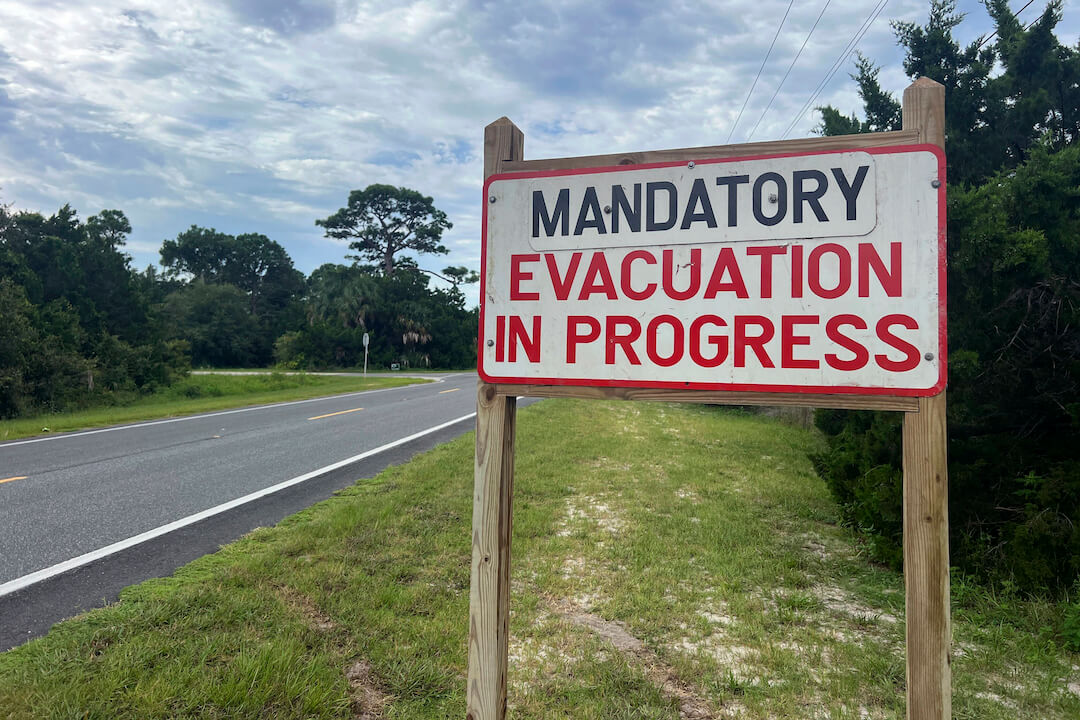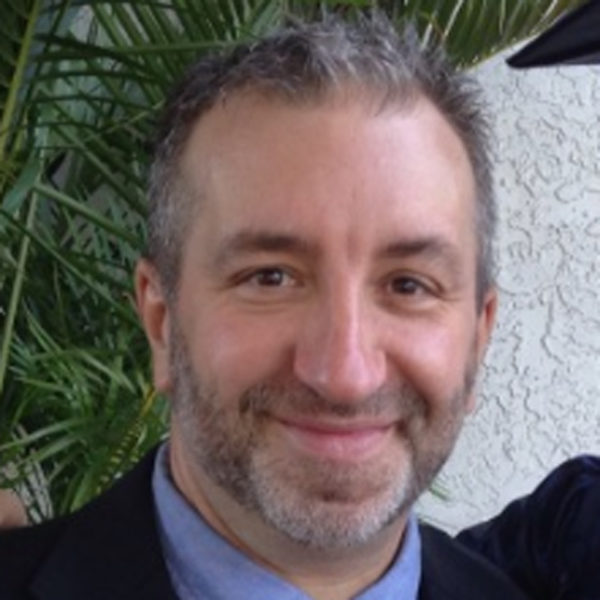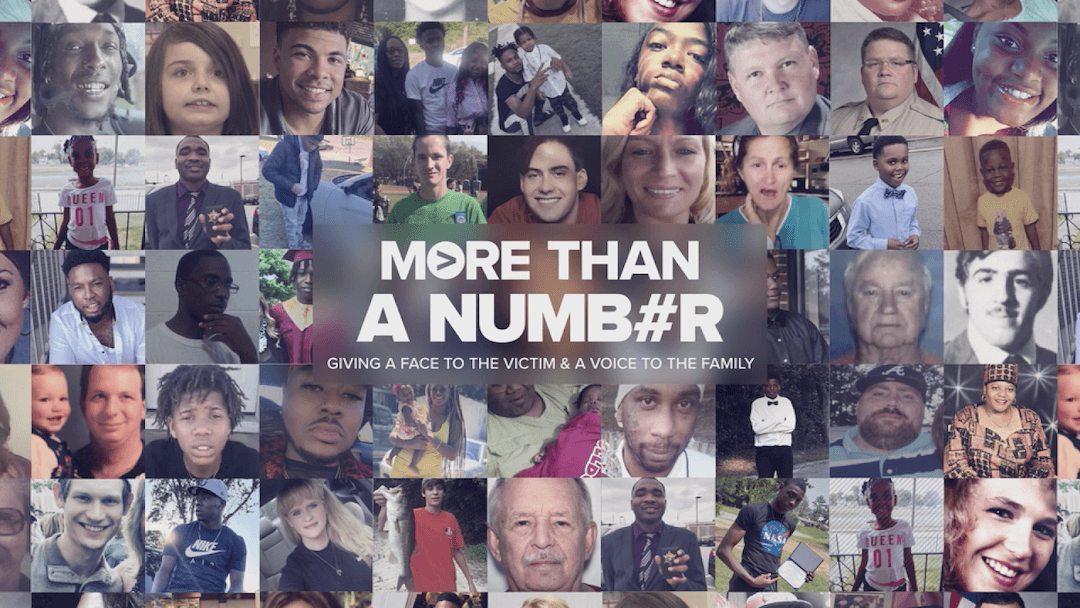Something I found interesting as I watched the local TV coverage of Hurricane Idalia from my living room in St. Petersburg, Florida, on Tuesday: There was a live report from a journalist for the local ABC affiliate standing on a beach near St. Pete. Despite a mandatory evacuation in that area — because of the warnings of storm surge — several people were seen walking in the sand.
Surely some viewers might have been wondering: If it’s dangerous for residents and tourists to be on the beach, why are reporters on the beach?
Perhaps anticipating what viewers might have been thinking, ABC Action News meteorologist Shay Ryan made a smart and timely point on the air. She said, “One of the things to keep in mind is that we have our reporters stationed strategically, and we put a lot of thought and care into where they are positioned and how they are positioned and (we) time out accordingly to how the conditions are going to change. So that is part of what we’re doing and why we ask you to (evacuate and seek shelter); so we can show you the pictures as safely as possible. It’s not always safe, even with all the precautions we take. So, again, we are going show you lots of live pictures and as we continue through this storm, it is best to stay indoors, to hunker down, hang out with the family and we’ll all get through this.”
This narrative comes up every time there is a major weather event, especially hurricanes. You see people like The Weather Channel’s Jim Cantore or one of your local reporters standing in thigh-deep water or shouldering against sideways rain, while trees bend and stop signs rattle behind them.
Two years ago today, I wrote about this very topic in the aftermath of Hurricane Ida, a Category 4 hurricane that slammed into Louisiana. At the time, I asked my longtime Poynter colleague Al Tompkins about such reporting. Tompkins is razor sharp when it comes to broadcast journalism. He has been a reporter, photojournalist, news producer and news director, and taught multimedia storytelling for Poynter.
He told me at the time that he never condoned reporters standing in the middle of dangerous waves. But, there was a benefit to being in the storm.
“There is some value to the viewer to be able to see the intensity of a storm,” Tompkins told me after Hurricane Ida in 2021. “It can serve as a proxy for viewers who might have evacuated and want an eyewitness account of what they left behind. If you were locked in a shelter, you would be anxious to know what was happening outside.”
Tompkins also brought up another important point: If the world can see how bad the storm is, help is more likely to follow.
He told me back then, “God bless the journalists who are away from their families, who are walking around for days in wet socks while snarky bystanders shout ‘fake news’ at them. Let me tell you that live coverage saves lives. The communities that are suffering most desperately need journalists to document their needs. Help follows coverage. And I can say for sure that when Jim Cantore is on the air documenting the devastation in your town, emergency crews and federal aid will get there faster than if you suffer and nobody notices.”
This was something I thought about watching coverage, both local and national, of Hurricane Idalia, and something you can think about when the next hurricane hits.
It’s good for locals when national outlets rush into the storm. CNN sent a team of reporters — 11 in all — to Florida to cover the storm. ABC News sent chief meteorologist Ginger Zee and senior meteorologist Rob Marciano to the Tampa Bay area, while correspondents Mireya Villarreal and Victor Oquendo spread out across the northern part of the state.
And in the photo below, NBC News NOW anchor Tom Llamas is interviewing Mayor Joe Meek of Crystal River, Florida. Llamas, who just returned from covering the wildfires in Hawaii, anchored “Top Story with Tom Llamas” live from Florida’s Gulf Coast on Tuesday night.
Those are just a few examples of national figures moving into the path of a dangerous storm.

NBC News’ Tom Llamas, right, interviewing the mayor of Crystal River, Florida, on Tuesday ahead of the Florida landfall of Hurricane Idalia. (Courtesy: NBC News)
BREAKING NEWS: CNN appears to have a new boss
There has been a buzz about it for a week or so now, but apparently, it’s about to happen. CNN is about to name a new boss.
Puck’s Dylan Byers reported Tuesday night that any day now — maybe even today or by the time you’re reading this — Warner Bros. Discovery boss David Zaslav will name Mark Thompson as chairman and CEO of CNN. Thompson is the former CEO of The New York Times Company and former director general of the BBC.
Thompson will take over for Chris Licht, who was fired in June after a horrendous year on the job.
CNN is currently being headed up by a four-person leadership team and there was some thought that team would stay in place through the 2024 election. But Zaslav moved quickly to bring in Thompson. Apparently, according to Byers, some of the CNN leadership team was “blindsided” by Zaslav’s decision to “once again hire another outsider without running a formal, comprehensive executive search — and to do so at a time when CNN had finally achieved some semblance of stability after a chaotic period that began with (Jeff) Zucker’s abrupt ouster (in February 2022) and didn’t end until Licht’s defenestration this June.”
According to Byers, some inside CNN didn’t know that Thompson was being considered until Semafor’s Ben Smith broke a story last week.
Byers wrote, “Thompson, a former public market company C.E.O., could not pose a starker contrast to Licht, a former cable news and late night executive producer. At the Times Co., in particular, Thompson deftly architected a plan that rescued the business from its darkest financial hour in generations. Thompson also proved adept at speaking both the lingua franca of the newsroom as well as the love language of Wall Street analysts — no small thing, to be sure.”
We will have much more on this, for sure, in the days to come.
Zucker’s interests
Interesting scoop from Axios’ Sara Fischer. She reports that former CNN head Jeff Zucker is in talks to invest in newsletter startup Front Office Sports. Fischer warned that discussions are ongoing and might not result in a deal.
However, Zucker, who manages a $1 billion investment fund called RedBird IMI, has shown interest in newsletter startups Puck News, Punchbowl News and AirMail, Graydon Carter’s subscription newsletter company.
Front Office Sports was started in 2014 by CEO Adam White and mostly concentrates on the business of sports and sports media. It’s a nifty looking outfit with plenty of solid journalists, including senior writer Michael McCarthy. Front Office Sports says it has more than 40 employees.
Cease-and-desist

(AP Photo/Mark Lennihan, File)
Another scoop from Sara Fischer. She reports that two of The New York Times’ unions have sent cease-and-desist letters to management over new policies regarding return to work.
Fischer wrote, “The Times said it would require workers to return to the office three days per week until Sept. 2, 2024, at which time the company has the right to increase the in-office requirement to four days per week. A spokesperson said it has no plans to do that.”
The issue stems from a change Semafor’s Max Tani reported last week when he tweeted, “In an internal note, the New York Times says most staff must come in 3 days a week. While managers won’t check attendance, ‘newsroom leaders will periodically also look at badge swipe data to review attendance trends’ and ‘may flag individuals with particularly low attendance.’”
Fischer wrote, “The New York Times Guild, which represents the majority of the Times’ newsroom workers, and the Times Tech Guild, which includes more than 600 Times tech workers, both sent cease-and-desist letters to management last week, following the badge swipe announcement, union representatives confirmed to Axios.”
A Times spokesperson told Fischer, “We believe that allowing people the flexibility to work together in the office at times and remotely at other times benefits everyone by ensuring that we maintain the strong, collaborative environment that has come to define our culture and drive our success.”
Unfortunate irony
Earlier this week, a TV news crew in Chicago was doing a story on armed robberies in the city when they were … the victims of an armed robbery.
The Spanish-language TV station Univision Chicago said that two of its employees were robbed at gunpoint. Luis Felipe Godinez, vice president of news at Univision Chicago, told the Chicago Tribune’s Robert Channick that his crew was “approached with guns and robbed.”
The robbery reportedly happened around 5 a.m. as the two-person crew was about to do a live shot. That’s when an SUV and another car pulled up to the scene. Three people wearing ski masks and carrying firearms got out. According to police, the TV crew was robbed of money, their camera and other equipment.
Police said there were no injuries.
The Washington Post’s Timothy Bella wrote, “The robbery of the TV crew comes as Chicago police are investigating a series of at least eight armed robberies and carjackings that unfolded on Sunday night and Monday. Police have not linked any of the incidents, but have said that each case has involved a group of two to four people ambushing the victims.”
Mea culpa
OK, I have to call myself out on something. In Tuesday’s newsletter, I wrote about how Gannett is pausing its use of AI on high school football game stories. I quoted an internal memo in which the company said it was “tapping the brakes” on the experiment.
I didn’t cut and paste the memo. I transcribed it. But when I did, I didn’t type “brakes.” I typed “breaks.”
I guess it proves that I am not using artificial intelligence. In fact, it proves I wasn’t using any intelligence at all.
Media tidbits
- The Wall Street Journal’s Khadeeja Safdar with “A Private Phone. Secret Recordings. Inside One CEO’s Relationship With a TV Anchor.”
- CNN’s Oliver Darcy with “Disney, The New York Times and CNN are among a dozen major media companies blocking access to ChatGPT as they wage a cold war on A.I.”
- Just an observation. Just before 2 p.m. on Tuesday, Florida Gov. Ron DeSantis held a press conference to give an update to Floridians on Hurricane Idalia. CNN and MSNBC carried DeSantis’ comments live. I flipped on Fox News, which was talking about homes without fathers and comments made at the GOP debate by Vivek Ramaswamy. Fox News then went to the Florida press conference, but DeSantis had stopped talking by then and other Florida emergency officials were giving their updates. Again, just an observation.
- Semafor’s Max Tani with “The Washington Post lays off staff from tech arm.”
- Veteran Filipino journalist Mike Enriquez died Tuesday after a long illness. He was 71. The Manila Times’ Iza Iglesias called Enriquez “highly respected and trusted.” Here’s more from the CNN Philippines staff.
- The Daily Beast’s Lachlan Cartwright and Justin Baragona with “Media #MeToo Men Mount Pathetic Comebacks.”
- Here’s the powerful front page of The Daily Tar Heel, the student newspaper at the University of North Carolina, following the shootings on campus on Monday.
Hot type
- Keith Sargeant of NJ Advance Media for NJ.com with “A culture of silence. A predator coached at 8 N.J. schools after being fired for sexual misconduct. Why wasn’t he stopped?”
- The Washington Post’s Emma Brown and Peter Jamison with “The Christian home-schooler who made ‘parental rights’ a GOP rallying cry.”
More resources for journalists
- Subscribe to Poynter’s Friday newsletter, Open Tabs with Poynter managing editor Ren LaForme, and get behind-the-scenes stories only available to subscribers.
- Sign up for Beat Academy (Now-Oct. 19) (Webinar series) — You’ll get tips, sources, inspiration and ideas to cover emerging newsroom beats. Enroll now.
- Executive Leadership Summit (Oct. 2023) (Seminar) — Apply by Aug. 14.
- Power of Diverse Voices: Writing Workshop for Journalists of Color (Nov. 15-18) (Seminar) — Apply by Sept. 15.
Have feedback or a tip? Email Poynter senior media writer Tom Jones at tjones@poynter.org.
The Poynter Report is our daily media newsletter. To have it delivered to your inbox Monday-Friday, sign up here.







Comments